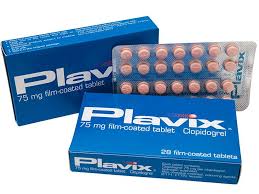Premarin
Premarin, a name that elegantly reflects its origin from “pregnant mare urine,” is a distinguished prescription medication primarily utilized for hormone replacement therapy (HRT). This formulation comprises a blend of estrogens meticulously extracted from the urine of pregnant mares. With FDA approval, Premarin has been a trusted choice for decades, addressing menopausal symptoms and various conditions associated with estrogen deficiency. This article delves into its applications, advantages, potential risks, and ethical considerations.

Applications of Premarin
Premarin is predominantly employed in hormone replacement therapy to address a range of conditions, including:
Menopausal Symptoms
Hot Flashes: These sudden surges of warmth, often accompanied by perspiration and flushing, are effectively mitigated through estrogen therapy.
Night Sweats: Estrogen plays a pivotal role in alleviating the intensity of these nocturnal episodes, thereby enhancing sleep quality.
Vaginal Atrophy: Premarin aids in restoring the elasticity and lubrication of vaginal tissue, alleviating discomfort during intimate moments.
Osteoporosis Prevention
Premarin is frequently prescribed to postmenopausal women to combat bone loss and diminish the risk of fractures. It is typically recommended for those at significant risk who are unable to pursue alternative therapies.
Hypoestrogenism
This condition, resulting from ovarian failure, surgical interventions, or other medical issues, is addressed through estrogen replacement therapy such as Premarin.
Certain Types of Cancer
In some cases of hormone-sensitive cancers, Premarin may be incorporated into palliative care to alleviate symptoms.
Composition
Premarin is composed of a unique blend of conjugated estrogens, primarily estrone sulfate and equilin sulfate. These estrogens, derived from the urine of pregnant mares, distinguish it from synthetic or plant-based estrogen therapies.
Advantages
Symptom Relief: Premarin offers substantial relief from moderate to severe menopausal symptoms, significantly enhancing overall quality of life.
Bone Health: It promotes bone density, thereby reducing the likelihood of fractures associated with osteoporosis.
Enhanced Vaginal Wellness: This treatment effectively alleviates the discomfort linked to vaginal dryness and irritation.
Potential Risks and Adverse Effects
While Premarin is known for its efficacy, it is not without potential risks, especially when utilized over extended periods or at elevated doses. The side effects can be categorized as follows:
Common Side Effects
– Nausea
– Breast tenderness
– Headaches
– Bloating
Serious Risks
– Cardiovascular Concerns: Long-term estrogen therapy has been associated with an elevated risk of blood clots, strokes, and heart disease.
– Breast Cancer: Research indicates a heightened risk of breast cancer with prolonged use.
– Endometrial Cancer: Women with an intact uterus using estrogen-only therapy face increased risks unless a progestin is included.
Emotional and Psychological Effects
Some women may experience mood fluctuations, anxiety, or depressive symptoms while undergoing treatment with Premarin.
Dosage and Administration
Premarin is offered in various formulations, including oral tablets, topical creams, and vaginal rings. The specific dosage is tailored to the condition being addressed, the patient’s age, and individual health considerations. A healthcare professional will determine the most suitable dose and duration of treatment, striving to use the lowest effective dose for the briefest time necessary.
Ethical Considerations
A significant point of contention surrounding Premarin is its origin: the urine of pregnant mares. This process involves confining these animals and collecting their urine, raising serious animal welfare concerns. Advocacy groups and conscientious consumers have urged for greater transparency in production methods and the exploration of synthetic or plant-based alternatives.
Alternatives to Premarin
For those seeking options that do not involve animal–derived ingredients or wish to explore alternatives with varied risk profiles, several other hormone replacement therapy products are available:
– Bioidentical Hormones: These are derived from plants and are chemically identical to hormones produced by the human body.
These pharmaceutical alternatives offer comparable advantages without dependence on animal-derived ingredients. Adopting a lifestyle that includes a nutritious diet, consistent physical activity, and non-hormonal treatments can also alleviate menopausal symptoms.
Conclusion
Conclusion Premarin continues to be a prevalent choice for addressing menopausal symptoms and various conditions linked to estrogen deficiency. While it proves effective, it is crucial to carefully consider the benefits alongside potential risks and ethical implications. Women contemplating the use of Premarin should engage in a candid dialogue with their healthcare provider to establish the most appropriate treatment strategy tailored to their medical history and personal beliefs.







